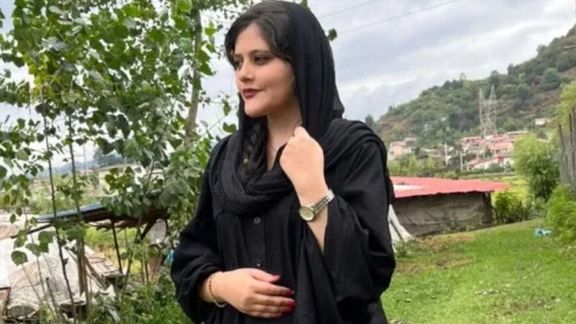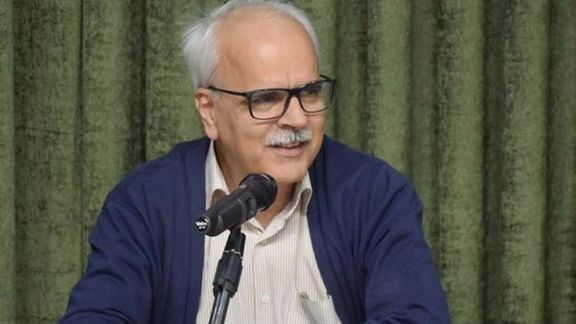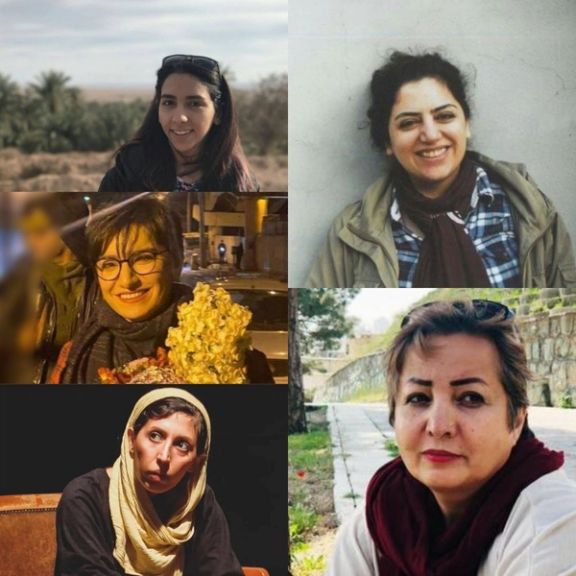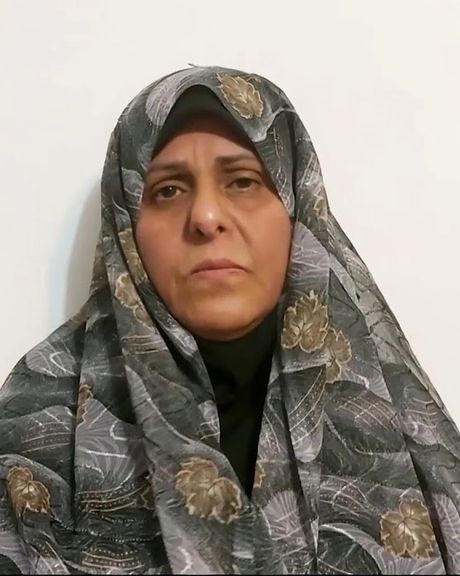Iranian Dissident Representatives To Attend Munich Security Conference

Prominent Iranian dissident figures, exiled prince Reza Pahlavi, women rights activist Masih Alinejad, and activist Nazanin Boniadi are attending the Munich Security Conference.

Prominent Iranian dissident figures, exiled prince Reza Pahlavi, women rights activist Masih Alinejad, and activist Nazanin Boniadi are attending the Munich Security Conference.
The conference, which has not invited officials from Russia and the Islamic Republic of Iran this year, starts Friday and concludes February 19. Many Iranians residing in the city also held a gathering outside the venue of the event on Friday to support the dissident figures.
The organizers of the annual forum, which draws together senior foreign and defense officials, have not invited the Iranian government to this year’s event, citing “the current political situation” in the country.
Protesters in Iran and opponents abroad see the decision to invite dissident leaders as a big victory for the protest movement that began in September after Mahsa Amini was killed in ‘hijab police’ custody.
Since a historic forum in Washington was held with eight prominent opposition figures in attendance, the dissident activists have been participating in events around the world to make the voice of the Iranian opposition heard. Such events signal the emergence of a leadership council in the diaspora to campaign for international support in favor of Iran’s protest movement.
Alinejad and Canada-based activist Hamed Esmaeilion, whose daughter and wife were killed in the shooting down of Flight PS752 downed by Iran’s Revolutionary Guard in 2020, are also scheduled to deliver speeches at the Italian Senate about the current wave of the protests in Iran. They are also set to attend a gathering against the Islamic Republic in the capital Rome the following day.
In December, the Italian Senate’s Foreign Affairs and Defense Committee unanimously approved a resolution urging Tehran to respect women’s rights and stop its crackdown on peaceful protesters.

The protest movement in Iran has succeeded in sowing the seeds of a hitherto missing dialogue among social groups and generations that can rekindle the protests anytime.
The protest movement born after the death in custody of Mahsa Amini in September has to a good degree succeeded in creating a process of dialogue between the modern and traditional groups of the society and between generations, professor Hadi Khaniki, chairman of the Iranian Society of Cultural and Communications Studies of Tehran University, said in a speech at Rahman Institute in Tehran last week.
The regime which heavy-handedly suppressed protesters, executed four, killed as many as 500 and arrested around 20,000 in the first four months is now claiming victory but the impact of the protests has been immense.
The relative recent calm may have only been temporary, too. On Thursday, people took to the streets in several cities again on day forty after the execution of two protesters, Mohammad Hosseini and Mohammad-Mehdi Karami, in Karaj. Protests have been reported from the capital Tehran, Mashhad, Sanandaj, Karaj, Izeh.
In an essay from Evin Prison in Tehran which was published by Zeytoon website on January 31, prominent sociologist Saeed Madani said one would not be able to imagine any future for Iran that does not bear the mark of the Mahsa Movement.

“Understanding what happened in over 100 days of protests bears strategic significance even if at the time of publication of this essay the protests have temporarily or permanently ended,” Madani wrote.
“The protest movement has [also] created…a multi-dimensional national identity with various ethnic, gender and religious identities somehow acting together instead of one-dimensional nationalism,” Khaniniki said while pointing out that the protests have also established a process of communication between expatriates and the people of Iran “despite all [their] political differences”.
Khaniki who has dubbed the recent protests as the “Movement of the Neglected”
was a member of the central council of the reformist Mosharekat (Islamic Iranian Participation Front) Party which formed the largest faction in the parliament from 2000 to 2004 during the presidency of Mohammad Khatami to whom he served as a media advisor.
Mosharekat Party was banned in 2009 in the aftermath of the disputed elections that brought the hardliner Mahmoud Ahmadinejad to power for a second term, and many of its leading figures were imprisoned. The party did not declare itself secular but did promote the separation of religion and state. Khaniki is currently a member of the central council of the Etehad-e Mellat (National Unity) Party which has many similarities to Mosharekat.
The Mahsa Movement has also somehow reactivated Iran's once very popular reformists who were marginalized after 2009. Two weeks ago, two of their prominent leaders, Khatami and Mir-Hossein Mousavi who has been under house arrest since 2011, issued separate statements related to the protest movement.
Khatami condemned the regime suppression of the protests but insisted that the solution to the problems of the country is not overthrowing the regime which he said was impossible to do because of its power of suppression. Instead, he advised the regime to surrender to fundamental reforms before it is too late.
Mousavi, on the other hand, announced his recognition of the Woman, Life, Freedom movement and declared that the Islamic Republic was no longer reformable. The current regime must be replaced, through elections and referendum, with a new democratic government through non-violent means, he said.
Both statements have found resonance with various political figures and parties from across the reformist spectrum.

Five female Iranian prisoners, who have just been freed, have demanded the release of all female political prisoners, emphasizing that "the day of freedom is close."
In their statement, the five women said solidarity shown by “the freedom-loving people and youths of Iran” was the main reason for the release of many political prisoners in the past days.
During recent days several reports have been published about the release of a number of political and civil activists, but some observers call it a "selective amnesty".
Alieh Mottalebzadeh, Raha Asgarizadeh, Noushin Jafari, Maliheh Jafari and Hasti Amiri further noted that the "continued support of the people and the efforts and persistence of the international community" are effective factors that can lead to the release of all male and female political prisoners.
In January, thirty female political detainees in the notorious Evin prison in Tehran, also signed an open letter demanding an end to the "unjust sentences for prisoners" and their execution.
“We, the political and ideological prisoners in the women’s ward of Evin Prison, demand an end to the execution of protesters and an end to unjust sentences of prisoners in Iran,” they said in a petition.
In more than four months, over 500 citizens were killed by government agents, dozens of whom were children. In the meantime, about 20,000 protesters were also arrested.

After a period of relative calm across Iran, Thursday was another action-packed day for the Iranians who are holding regular antigovernment protests for about five months.
People across the country had planned for the Thursday protests since at least a fortnight ago as it marked the 40th day after the execution of Mohammad-Mehdi Karami and Mohammad Hosseini, two of the four Iranians who were hanged for their participation in antigovernment rallies.
According to videos on social media, the February 16 protests were held in several cities with people chanting slogans against the regime and its ruler Ali Khamenei, whom they call a “dictator”. Protesters responded to calls by grassroot activists that have mobilized thousands of protesters in several towns and cities during the current unrest, and held gatherings at main streets and squares of their cities in evening hours.
Amid a tense presence by security forces, people in several neighborhoods of capital Tehran, the religious city of Mashhad in the northeast, central cities of Arak and Esfahan (Isfahan) and Kurdish majority city of Sanandaj and many others held protest rallies. During their show of solidarity, they chanted the main slogans of the current wave of protests, ignited by the death in custody of 22-year-old Mahsa Amini. “This is the year of blood, Seyyed Ali (Khamenei) will be gone,” and “Women, Life, Freedom,” chanted the protesters.
The cities of Ahvaz and Izeh in Khuzestan province, Rasht in Gilan, and some cities in Hormozgan were also scenes of protests on Thursday.
Gatherings were also big in the city of Karaj, near the capital, the hometown of the two protesters, Karami and Hosseini, who were executed 40 days ago.
The 40th day of a loved one’s death – as well as the seventh day -- carries immense cultural significance in Iran, and in case of an unjust killing, the occasion turns into public mourning and fuels angry protests.
Karami and Hosseini were arrested in Karaj during demonstrations on the 40th day of another victim, Hadis Najafi. Holding such events is reminiscent of a similar turn of events 44 years ago, during the Islamic revolution against monarchy that culminated in the overthrow of the Pahlavi dynasty under Shah Mohammad Reza Pahlavi, and the establishment of the Islamic Republic in 1979. Marking the 40th day for people who were killed during the revolution turned into fresh protests that fueled the movement.
The Thursday demonstrations occurred only one day after Supreme Leader Khamenei bragged about the turnout of government sponsored celebration on February 11 to mark the establishment of the regime, saying "people literally created an epic across the country" in supporting the Islamic Republic. A day later, the people were calling for his ouster in multiple cities.
In addition to nationwide protests, Iranian diaspora communities have also planned another protest rally for February 20 outside the European Parliament in the Belgian capital Brussels. The gathering is meant to call on the European Union countries to designate the Revolutionary Guard – or the IRGC – as a terrorist organization. Thousands of Iranians from all over Europe held a massive rally in Strasbourg in January to pressure the European countries to list the IRGC.
Iranians staged mass rallies in dozens of cities across the world calling for the overthrow of the Islamic Republic on Saturday [February 11], concurrent with the regime-sponsored events inside Iran to mark the 44th anniversary of the Islamic Republic in 1979.
In their historic joint event in Washington on the eve of the rallies on February 10, eight prominent opposition figures held a joint forum, signaling the emergence of a leadership council in the diaspora to campaign for international support in favor of Iran’s protest movement. They also called for support from democratic countries to change the regime in Iran and establish democracy.

Although the Iranian regime claims tens of thousands of inmates have been pardoned by the Supreme Leader, the Student Councils Union says many students have been expelled and suspended following recent protests.
The Telegram channel of the Student Councils Union announced that students of Tarbiat Modarres University in Tehran are routinely summoned by the intelligence ministry.
"In an illegal process and without having a lawyer or holding a hearing, they forced the students to sign a letter prohibiting them from participating in future protests," noted the Union.
It further criticized Khamenei, saying “when the pardoner is the criminal himself, how can he pardon others?”
According to this Union, Fatemeh Mahzoun, a student of Bojnord University of Medical Sciences in the northeast, was expelled from the university and sentenced to five years of exclusion from studying at other universities.
Meanwhile, a young elementary school teacher in the northern city of Qaemshahr has been expelled after she played a song for the students who sang along. Education ministry officials said the license of the school would probably be canceled too.
During the anti-government protests in Iran following the death in custody of Mahsa Amini, which is still going on after five months, the students were violently suppressed.
According to the US-based Human Rights Activists News Agency (HRANA), at least 720 students have been arrested so far with some being sentenced to long-term imprisonment.

Fatemeh Sepehri, an activist opposed to the Islamic Republic, has warned the authorities that she and millions of other people are fed up with their oppressive actions for 44 years.
In a petition from Mashhad prison in the northeast of Iran, Sepehri said the nation is tired of embezzlement, corruption, aggression and warmongering, and they can no longer tolerate such crimes and they will not stop until the country is taken back from [clerical rulers].
Sepehri, one of the signatories of a statement requesting Supreme Leader Ali Khamenei's resignation in 2019, published her petition on Wednesday.
She noted in the letter that after the martyrdom of her husband in 1980s during Iran-Iraq war, the regime agents took all her belongings.
Sepehri further added she was arrested at her home by Khamenei's agents in the Ministry of Intelligence, and her pension was "cut off upon the order of Khamenei".
"I was in solitary confinement for 31 days and due to my deteriorating health, I was transferred to hospital," she emphasized.
Despite Sepehri's need for medical care, her detention order has been extended three times.
Earlier, her brother announced she is sentenced to one year in prison and a fine of about 500 USD.
Two years ago, Sepehri was released from Mashhad's Vakilabad prison after nine months of detention, but she released a video, saying "I will not remain silent and will stay on this path."